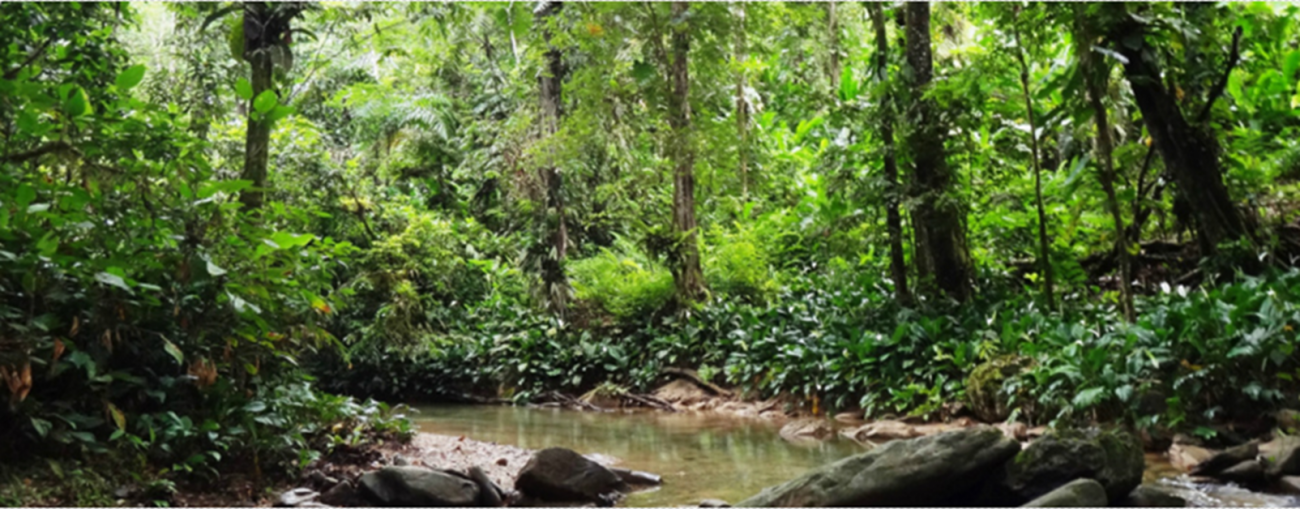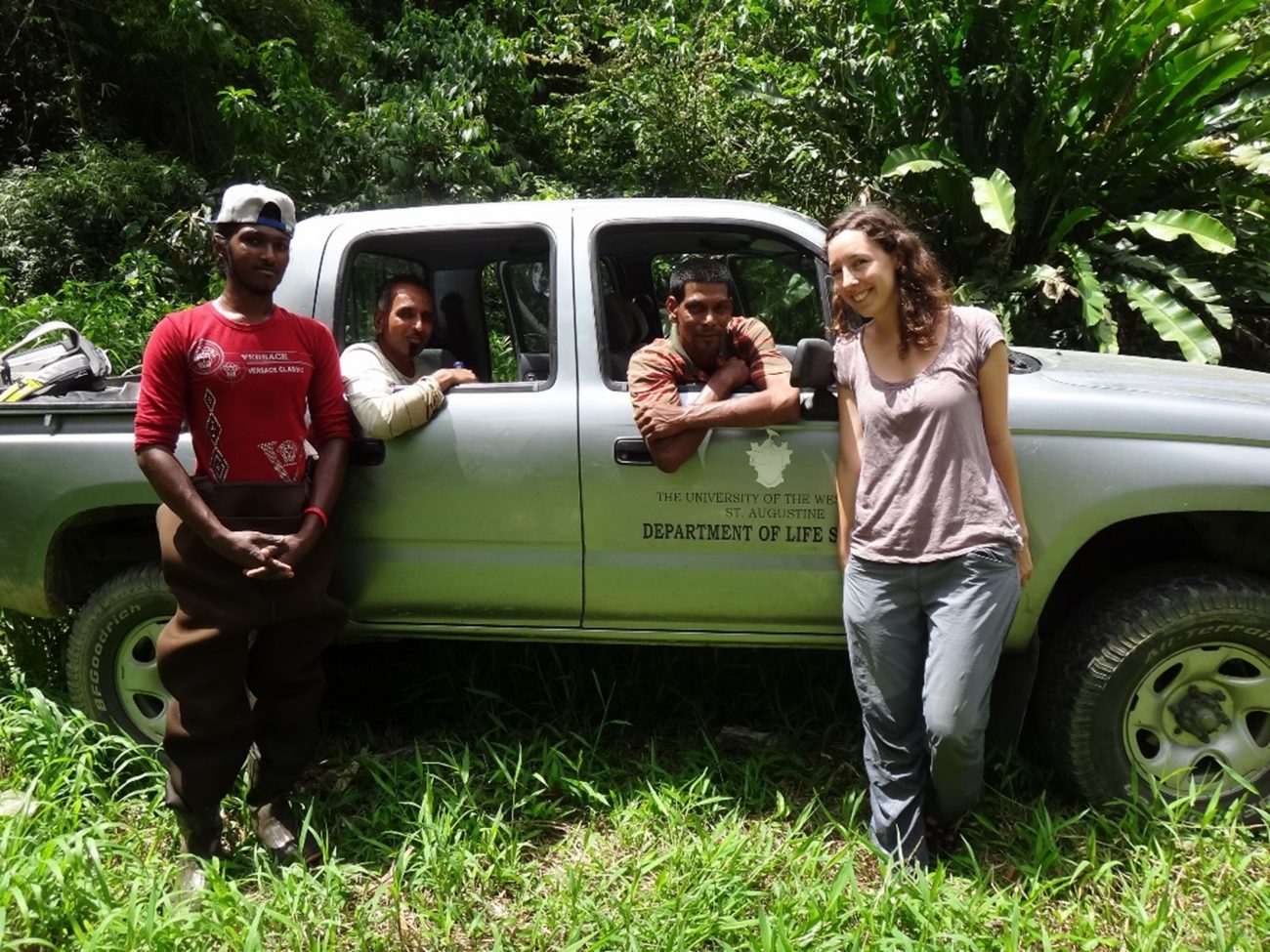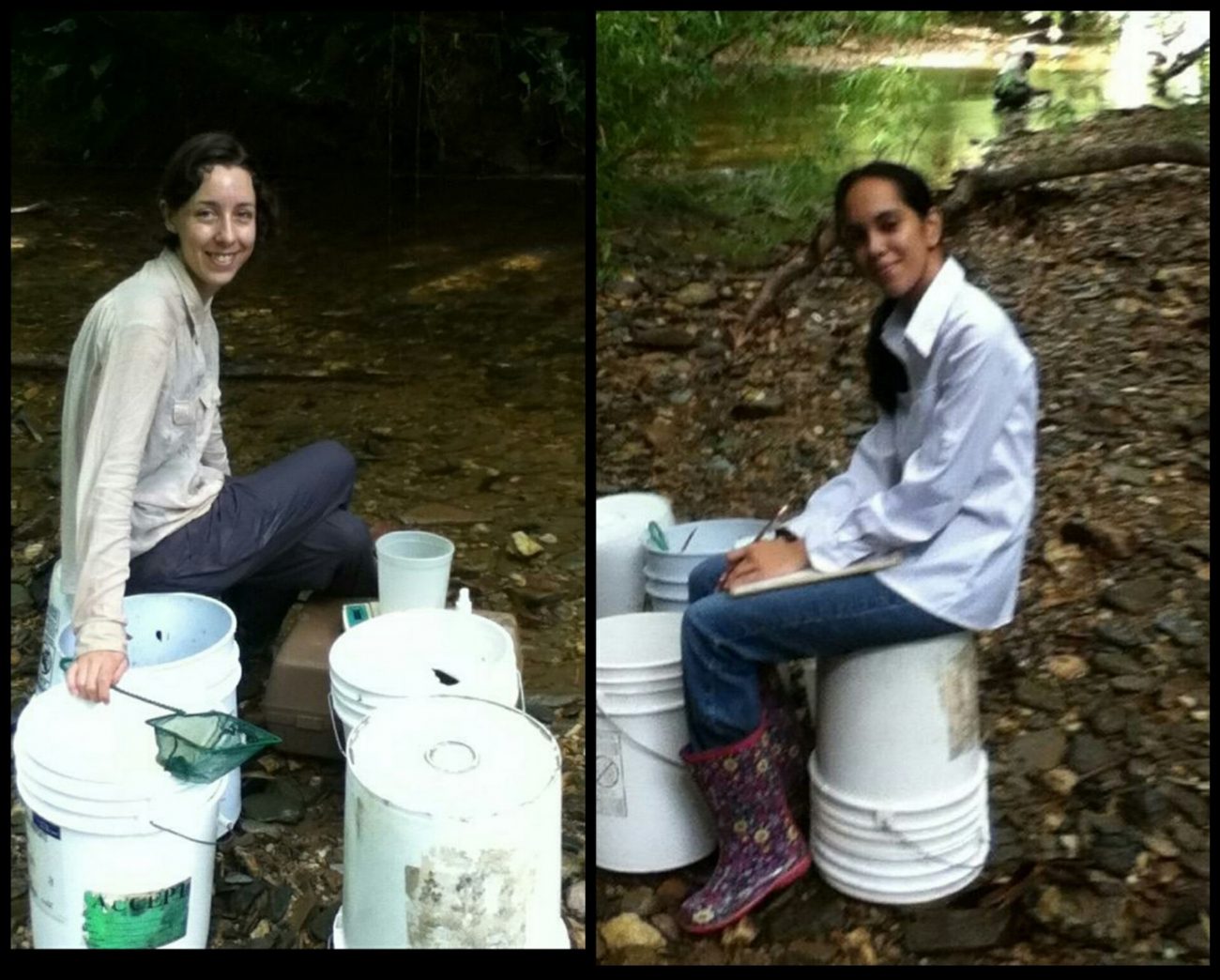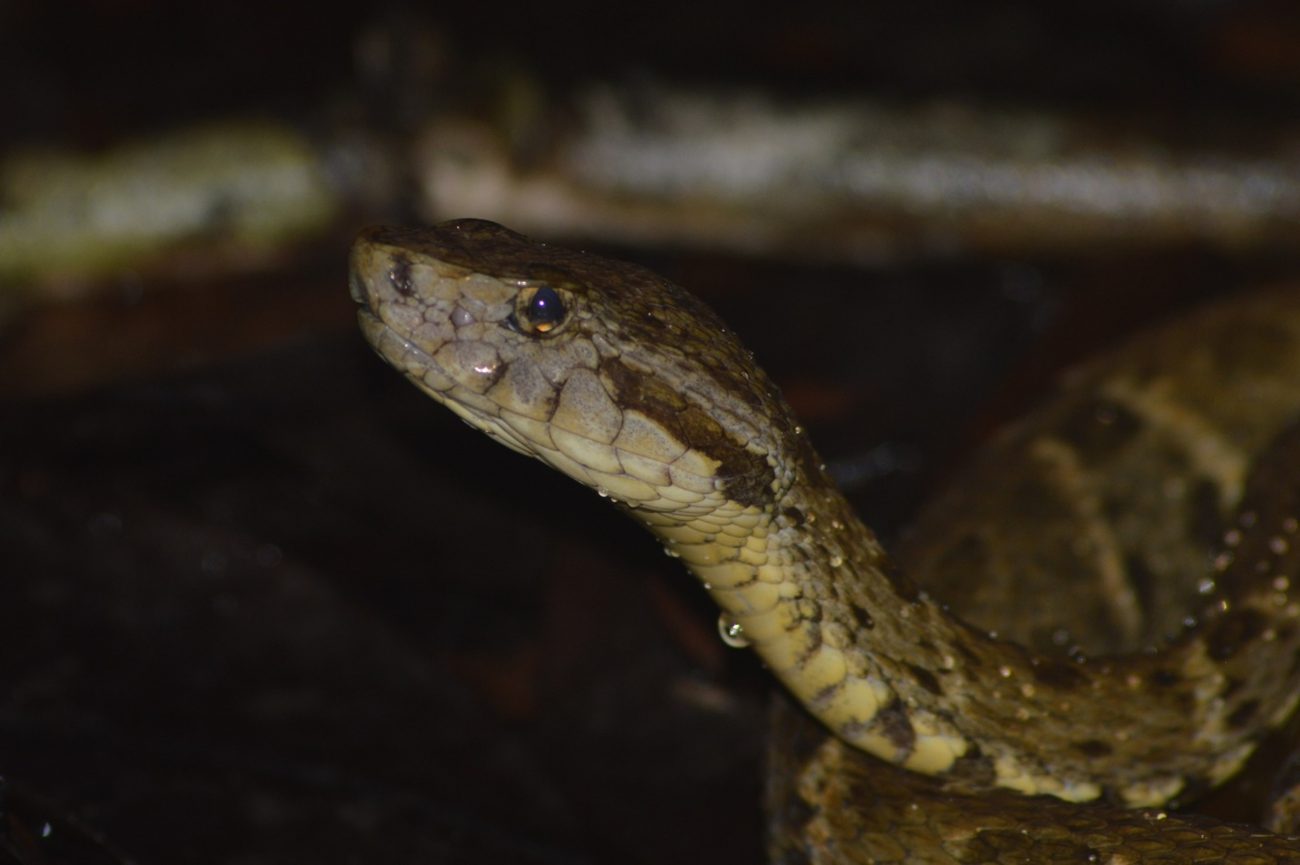
Snake encounter in the Trinidad Bush
Amy Deacon
October 7, 2020
Imagine you’ve insisted on bringing a young research assistant into the “bush”, despite their parents’ trepidation. Now imagine a venomous snake is swimming towards said research assistant. Not good.
I spent 5 years as a postdoc working on the initial BioTIME project, monitoring patterns of diversity in Trinidad’s Northern Range. This meant returning to the same stretches of stream several times a year to sample fish, aquatic invertebrates, and diatoms.

Every trip brought something different and exciting – whether an intricate hummingbird nest, a mountain crab covered in babies (they cling on until large enough to fend for themselves), or an endemic stream frog. Other times it was human distractions. Trinis like to ‘lime’ (relax with food, drink and friends) by the river on days off, and we were frequently offered an early morning beer/rum and invited to stay for a curried duck lunch. We got used to politely refusing such offers, as our samples had to be processed back on campus.
While fish could be identified on site, identifying smaller samples meant hours of sifting through petri dishes. Thankfully I had the expertise and company of Sarah, a fantastic graduate research assistant.
One day, Sarah casually mentioned that she had never visited ANY of the Northern Range rivers. I was horrified that she hadn’t experienced the beauty of the places where all of our samples come from, and insisted that she accompany us on an upcoming trip. She was keen, but the “bush” is considered dangerous by many Trinidadians, and her parents needed some convincing. We persuaded them that she was in good hands with our experienced team.

I chose one of my favorite field sites, and on a beautifully sunny day Sarah accompanied the field crew on our sampling run. Although just minutes from the road, this site feels like a million miles away once you are there – surrounded by huge trees, white wild lilies, and all the sounds of the forest. Sarah was mesmerized and had a wonderful time helping out.

Shortly after we started seining near a fallen tree trunk, we noticed something moving towards us in the water. As the Jaws theme tempo quickened, we saw it…the snake!
Now, Trinidad and Tobago have nearly 50 species of snake, and only 4 of these are dangerously venomous. Reassuring statistics, you’d think. Unfortunately, the most venomous species, the fer de lance (Bothrops atrox), is defended well enough to be assertive and is therefore most commonly seen. I couldn’t believe it; in years of sampling and literally hundreds of field trips, the one time we encounter a venomous snake is when Sarah has joined us for the first time!

is a pit viper. It is extremely well camouflaged on the forest floor and
apparently also enjoys a swim. Photo Credit: Renoir Auguste
Thankfully, my extremely experienced and cool-in-a-crisis colleague, Raj, calmly approached the snake. He used a long stick to “encourage” it in the direction of the bank, driving it far enough away that we could finish sampling. Sarah appeared unfazed, perhaps even excited by the experience. I was relieved, and subtly suggested that her chances of coming on another trip might be improved if she didn’t tell her parents about the deadly snake.
Fieldwork in Trinidad is always an adventure. I’m sure that’s a big part of why, a decade after embarking on BioTIME sampling, I am still here, exploring the island’s incredible biodiversity and enjoying the adventures that each day brings.